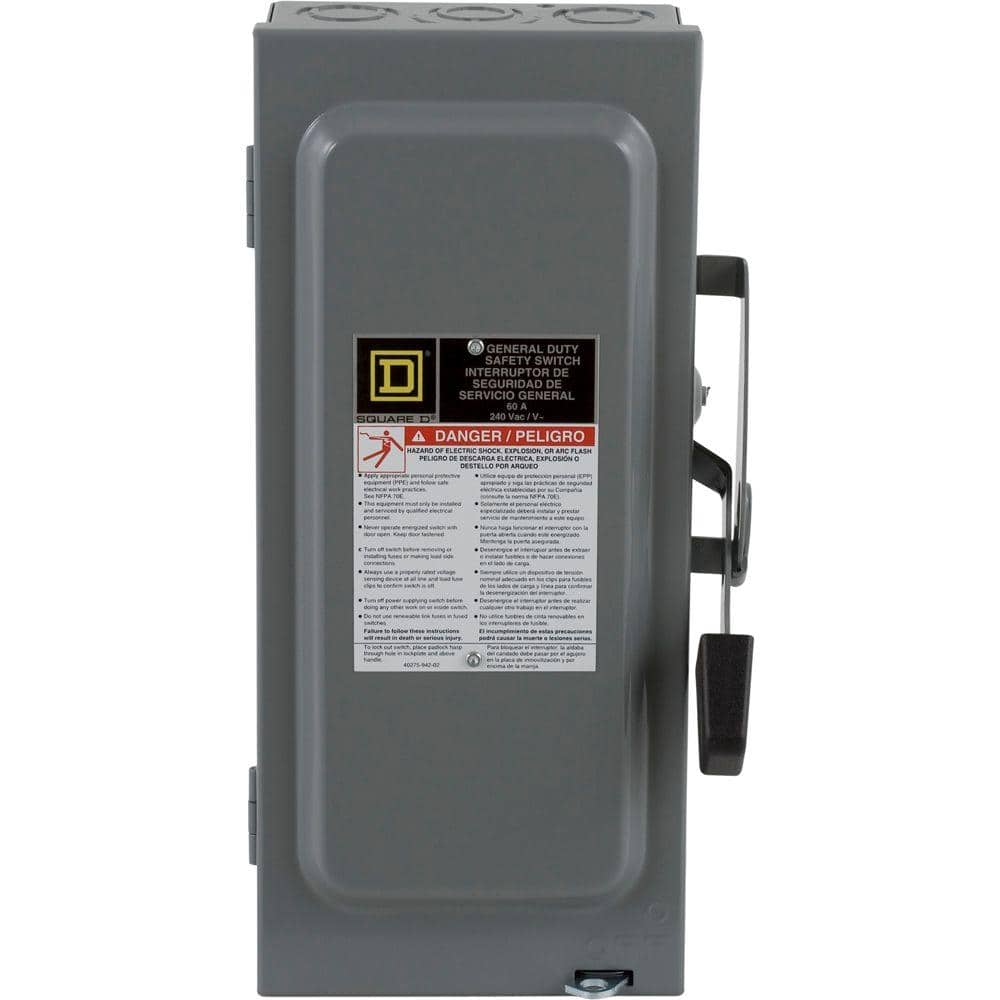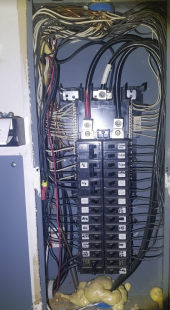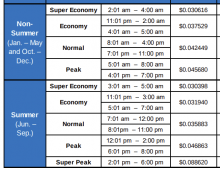Good eye. It's a Homeline Square D alright - a HOM30L200C to be exact. I believe it's a 200A bus bar. The smallest mains breaker they list on the brochure is 100A but 150A makes more sense to me.
Nice, how do you like the Sunny Boy inverter? Do you have optimizers installed? The only shadow I've to worry about is a chimney so I'm planning to go without them for the initial install.
Silly question... would a single inverter backfeeding via two 40A breakers count as 40A or 80A towards the 90A ceiling? If the former, I should have room for another inverter in the future, right?
Currently they pay a flat rate of $0.0445/kW for export and $0.08518/kW for pulling. Starting next year, it'll become TOU and a Peak Demand Charge will be added at $5.15 per kW ?
I think main breakers of 70A, 100A, 125A are for a smaller panel, and 150A and 200A for the larger.
The Sunny Boys have done well. First 5 SWR2500U, installed 2003 to 2005. One failed in warranty and a board was replaced. One failed out of warranty; I could see a blown power transistor. I rearranged panels. Turned out these models didn't work with Sunny Island.
I got 10000TLUS because it was listed as compatible. I discovered "backup" didn't work. SMA told me to set up for off-grid, with Sunny Island between it and the grid, and they updated their compatibility list. That worked, but I think this transformerless inverter got upset by VFD on my pool pump.
I bought a pallet of 5000US, which are transformer type. I expect them to withstand the poor PF from VFD, but haven't run a test yet. They do have "backup" mode working.
No optimizers, no RSD, no AFCI (included but not enabled at least in the 10000TLUS.) My panels are ground mount and were done before new rules, so none of those required.
I think optimizers are mostly for multiple orientations in a single string. They could also help with partial shading if you have multiple strings in parallel. If you get new model Sunny Boy, they have 2 or 3 MPPT, so you'll probably have one PV string per MPPT, no need for optimizers.
Bypass diodes take care of shading for single strings. If you have two strings and partial shading, a small amount will let the IV curve have a single maxima, no problem. If enough shaded that the curve has two maxima, only some MPPT algorithms will find the higher one. SMA claims their newer algorithms are improved.
AFCI - I've read that SMA's inverters used to nuisance trip so much that installers had to use a different brand. Presumably they've fixed that by now, but I don't know.
Sunny Boy frequency shift response with Sunny Island works well. Off grid, my system hovers between 61 Hz and 62 Hz during daylight, drawing what it wants from PV.
With Sunny Boy and Sunny Island (US 120V model), maximum PV that can pass through relays to the grid is 6.7 kW per Sunny Island. So if you get 7.7 kW Sunny Boy and later add Sunny Island, you might readjust the maximum output.
Breakers - one Sunny Boy would use a 2 pole 40A breaker. Two Sunny Boys is where you would use two such breakers. That would be 40 + 40 = 80A OCP (on each phase) and the main 150A, so 230A total. Within the 240A limit.
So you will have TOU (what rates? what hours?) And then the demand charge. Maybe you can reduce your peak consumption, something like disable dryer heater or whatever loads, using a priority switching system. There are also the various Sunny Island and Sunny Boy Storage battery inverters, but have to see if they're a clear financial winner or not.





